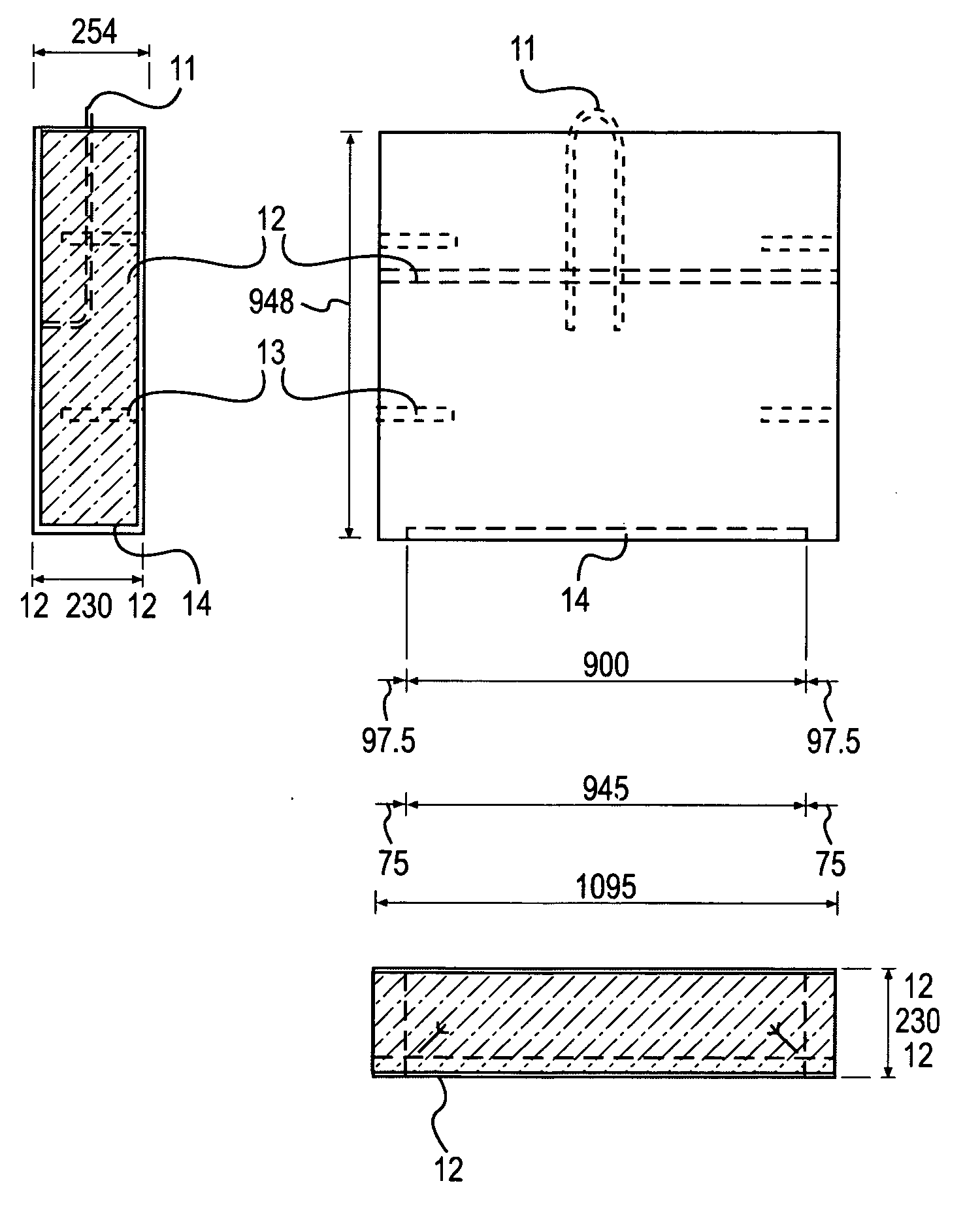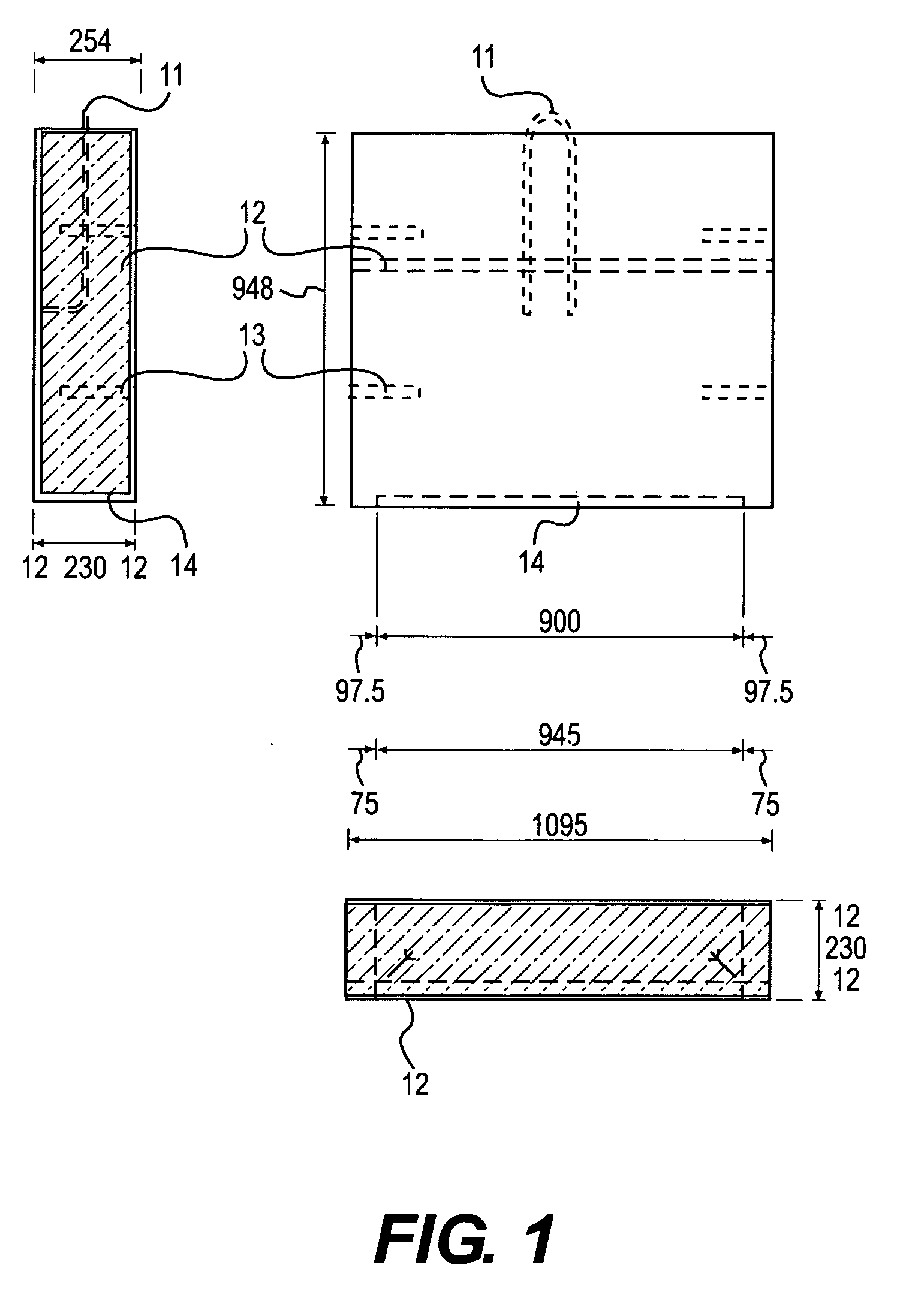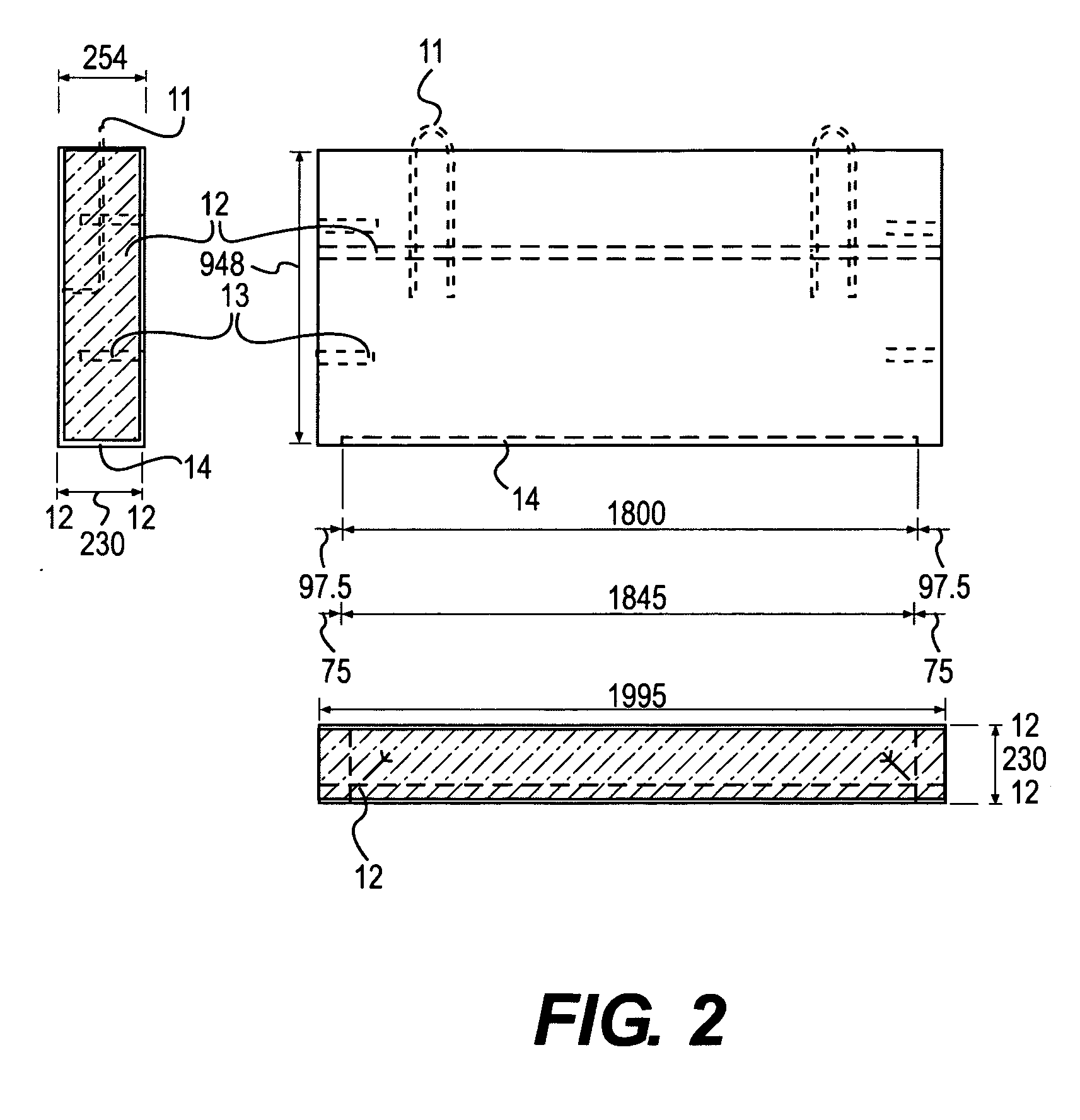Construction products and method of making same
- Summary
- Abstract
- Description
- Claims
- Application Information
AI Technical Summary
Benefits of technology
Problems solved by technology
Method used
Image
Examples
example 1
Effect of Initial Moisture Content and Type of Surface Finish Layers on the Energy Performance of a Residential House with Cellular Concrete Walls.
[0114] The hygrothermal behavior of an external wall made of two cement boards and one cellular concrete in the inside was numerically simulated for the first years of building use. A state-of-the art model applied for coupled heat, air, and moisture transfer in deforming porous building materials. Climatic data for a typical meteorological year for Toronto, Canada were applied for the definition of external boundary conditions. Four different cases for finish layers—interior and exterior wall surfaces, with and without a vapor-retardant paint—were considered. Based on the simulation results, space and time-averaged values of moisture content, thermal conductivity, apparent density, and specific heat of the cellular concrete layer were calculated for each month. These averaged material properties were used for a DOE-2.1E simulation of t...
PUM
| Property | Measurement | Unit |
|---|---|---|
| Fraction | aaaaa | aaaaa |
| Fraction | aaaaa | aaaaa |
| Fraction | aaaaa | aaaaa |
Abstract
Description
Claims
Application Information
 Login to View More
Login to View More - R&D
- Intellectual Property
- Life Sciences
- Materials
- Tech Scout
- Unparalleled Data Quality
- Higher Quality Content
- 60% Fewer Hallucinations
Browse by: Latest US Patents, China's latest patents, Technical Efficacy Thesaurus, Application Domain, Technology Topic, Popular Technical Reports.
© 2025 PatSnap. All rights reserved.Legal|Privacy policy|Modern Slavery Act Transparency Statement|Sitemap|About US| Contact US: help@patsnap.com



